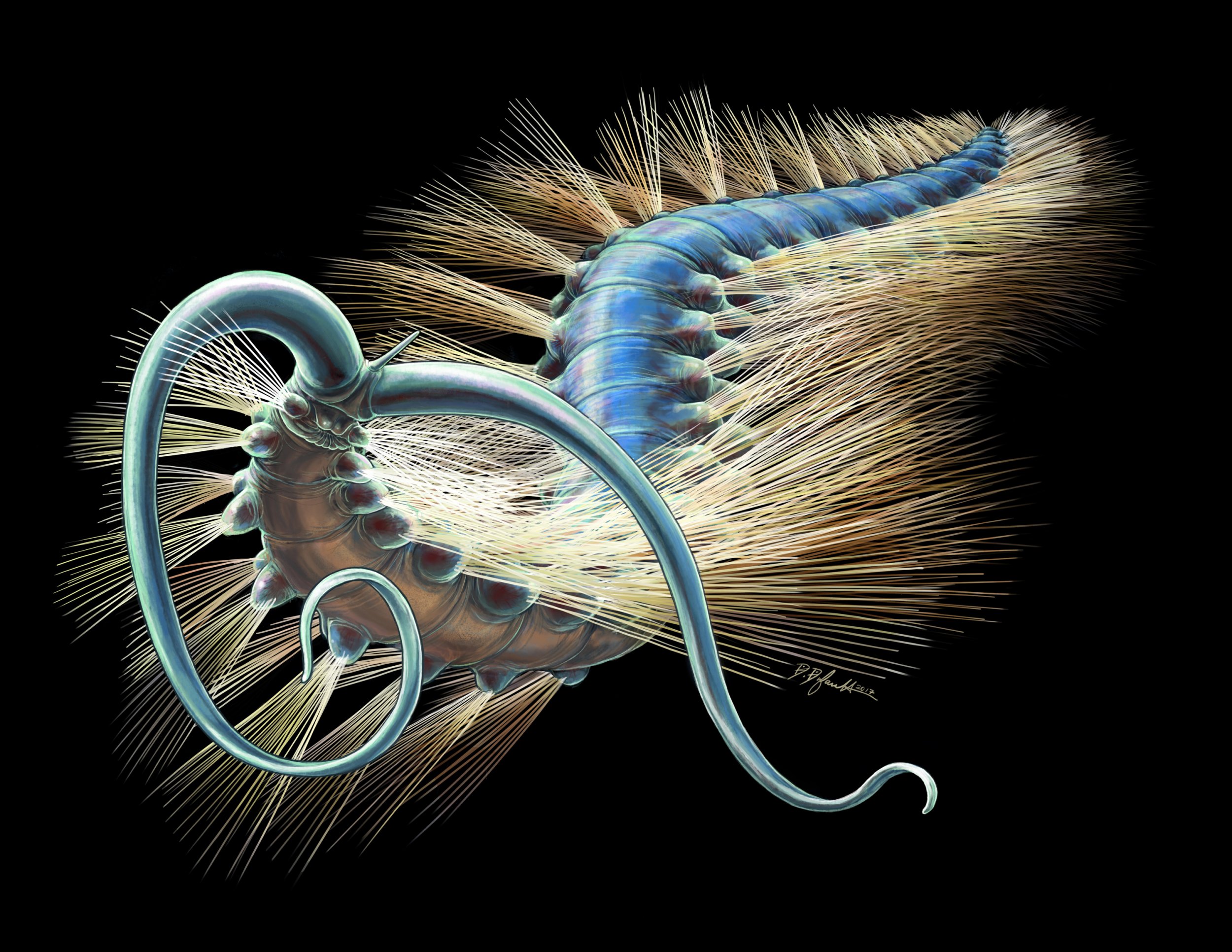
The newest ancient creature to give us a big glimpse into evolution is a tiny 508-million-year old worm that has crazy-looking tentacles and no eyes.
Researchers from The Royal Ontario Museum and the University of Toronto in Canada found more than 500 well-preserved bristle worm species—known by scientists as Kootenayscolex barbarensis—in the Kootenay National Park in British Columbia. The new species helps scientists better understand annelids, a group of animals that includes more than 9,000 species, like leeches and earthworms.
Related: Iron: What Humans Can Learn From Tiny Glowing Worms About This Vital Mineral
Despite their prevalence, researchers don't know much about annelids. They are found in a variety of habitats, from freshwater to oceans to damp soil, and cover a wide swath of appearances and behaviors. Their sheer diversity makes annelids an important group to study, study co-author Karma Nanglu, a University of Toronto PhD candidate and researcher at the Royal Ontario Museum, said in a statement. But, said Nanglu, that same diversity, "also makes it difficult to piece together what the ancestral annelid may have looked like."
Scientists have been particularly stumped about the creatures' heads because few fossils have been found well-preserved. But they hit the jackpot with the Kootenay National Park collection, which enabled the researchers to assemble more of their evolutionary history.
The researchers found that this species of annelid had two tentacles positioned at the front of its head, according to LiveScience, with smaller antennae between. Scientists believe that the longer tentacles were used to explore things further away and the shorter antennae were likely used to sense their surroundings within shorter distances. Only about an inch long, the worms were covered in bristles, with about 56 on each of the 25 sections that makes up its body.
According to the researchers, this small find yields a big revelation about how annelid heads have evolved over the years. The fossils suggest that the heads grew from the back body segments, which also had pairs of bristles.
Some of the specimens even contained bits of internal tissue, giving researchers their first opportunity to see such "delicate features" in a fossilized annelid, said study co-author Jean-Bernard Caron, senior curator at the museum, in a statement.

"This exceptional preservation opens a new chapter in the study of these ancient worms,"said Caron.
Uncommon Knowledge
Newsweek is committed to challenging conventional wisdom and finding connections in the search for common ground.
Newsweek is committed to challenging conventional wisdom and finding connections in the search for common ground.
About the writer
Melissa is a science writer covering health for Newsweek and has contributed to Inc., Dr. Oz The Good Life, Men's Fitness, Marie Claire and others. She earned ... Read more
To read how Newsweek uses AI as a newsroom tool, Click here.








